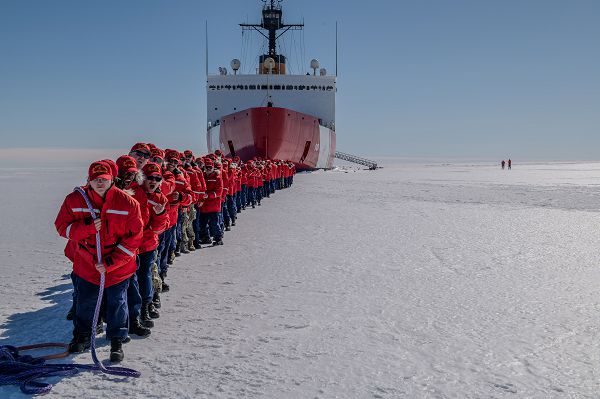
McMurdo Sound, Antarctica. (January 16, 2024): In this photo by Petty Officer 3rd Class Ryan Graves, the crew of the Coast Guard cutter Polar Star participates in an ice liberty to give the crew a moment to walk on the ice and “tow” the vessel. The nation’s only active icebreaker, the Polar Star recently completed its annual mission to clear a navigational channel to U.S. facilities in Antarctica. Officially called Operation Deep Freeze, this joint mission with the National Science Foundation uses the Polar Star to cut through ice up to twenty-one feet thick to allow ships to deliver fuel and essential supplies to America’s Antarctic stations with McMurdo Station as the logistics hub.
For 75 years, Operation Deep Freeze employs active and reserve members of the Air Force, Army, Navy, and Coast Guard to brave the harsh Antarctic weather to resupply some 700 NSF research facilities while the southernmost continent has 24 hours of daylight.
McMurdo Station was named after British explorer Archibald McMurdo who charted the area in 1841 and it became the base station for explorers into the 20th century. In 1955, the Navy sent 18 Sailors to build structures at McMurdo to establish a permanent American presence at the bottom of the world. Today, the base hosts researchers from around the world and military units seeking to train in its austere environment.


